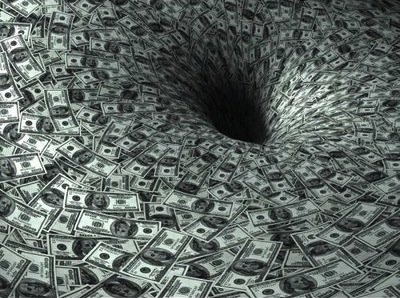
Zimbabwe has entered the hell of hyperinflation. Indeed, inflation in March rose by well over the 50% monthly threshold for qualifying as hyperinflation. The reporting of Zimbabwe’s travails invariably includes the standard reference to Weimar Germany’s 1922-23 hyperinflation, in which the monthly inflation rate peaked at 32,400%.
The choice of this Weimar reference is somewhat curious. After all, the world’s greatest monthly hyperinflation rate was recorded in Hungary in July 1946, and it was 12 orders of magnitude greater than that of the peak month of the Weimar hyperinflation. As is the case with much economic and financial data, the Hungarian record has simply tumbled down what George Orwell called a “memory hole.”
This brings me to another hyperinflation that was much more virulent than the oft-repeated Weimar episode. It was experienced in Yugoslavia during the 1990s and has gone unrecorded in the public’s consciousness�but not mine As the Vice President of Yugoslavia’s adviser from 1990-June 1991, I warned of a coming storm and recorded without surprise the ensuing events.
So what’s the story? From 1971 to 1991, Yugoslavia’s annualized inflation rate was 76%. Only Zaire and Brazil topped that dreadful performance. But things got worse�much worse. On January 7, 1991, the federal government of Prime Minister Ante Markovic discovered that, under the control of Slobodan Milosevic, the Serbian parliament had secretly ordered the Serbian National Bank (a regional central bank) to issue $1.4 billion in credit to Milosevic’s friends.
That illegal plunder equaled more than half of all the new money the National Bank of Yugoslavia had planned to create in 1991. The heist sabotaged the Markovic government’s teetering plans for economic reform and hardened the resolve of the leaders in Croatia and Slovenia to break away from the Socialist Federal Republic of Yugoslavia.
 Without the Croats and Slovenes to fleece, Mr. Milosevic turned on his own people with a vengeance. Starting in January 1992, what was left of Yugoslavia endured the second-highest and second-longest hyperinflation in world history.
Without the Croats and Slovenes to fleece, Mr. Milosevic turned on his own people with a vengeance. Starting in January 1992, what was left of Yugoslavia endured the second-highest and second-longest hyperinflation in world history.
It peaked in January 1994, when the official monthly inflation rate was 313 million% — 4 orders of magnitude higher than the Weimar hyperinflation, but well below Hungary’s record. The Yugoslav hyperinflation lasted 24 months, only two months shorter than the Soviet hyperinflation in the early 1920s.
The results were devastating. Long before NATO struck Yugoslavia in 1999, Mr. Milosevic’s monetary madness had already destroyed the economy. Wreck an economy, then start a war: It’s an age-old power-preservation ploy.
During the 24-month hyperinflation period, per capita income plunged by more than 50%. Ordinary people were forced to deplete their hard-currency savings.
People couldn’t afford to buy food in the free market; they kept from starving by either waiting in long lines at state stores for irregularly supplied rations of low-quality staples, or by relying on relatives who lived in the countryside.
For long periods, all of Belgrade’s gas stations were closed, with the exception of one station that catered to foreigners and embassy personnel. People also spent an inordinate amount of time at the foreign-exchange black markets, where they traded huge piles of near-worthless dinars for a single German mark or US dollar note.
In what has become a common refrain for embattled heads of state, Mr. Milosevic claimed that the Yugoslavs were victims of external influences. His story was that the hyperinflation and resulting hardships were caused by the embargoes imposed by the United Nations in May 1992 and April 1993.
In reality, Mr. Milosevic’s money machine was put into over-drive to finance his war machine. More than 80% of Yugoslavia’s budget was earmarked for the military and police forces, and by December 1993 almost 95% of all government expenditures were being financed with freshly printed dinars.
Nothing tells this horrendous story better than the devastating devaluations that repeatedly decimated the dinar. As the accompanying table shows, the Yugoslav devaluations dwarf those that wrecked havoc in Asia, Russia and Brazil in the 1997-99 period.
Between January 1, 1991 and April 1, 1998, the dinar was officially devalued 18 times (three of which exceeded 99%), and 22 zeros were lopped off that unit of account.
For a sense of the impact on the local population, imagine the value of your bank accounts in dollars and then move the decimal point 22 places to the left. Then try to buy something.
Yugoslavia’s monetary orgy finally came to an end when the Topcider mint ran out of capacity. The hyperinflation was transforming 500-billion-dinar bills into small change before the ink had dried.
But Milosevic’s monetary mischief was nothing new. The old Serbian kings were notorious coin-clippers. As long ago as the early 14th century, King Milutin minted imitation Venetian silver coins at Novo Brdo and Prizren, located in what is now Kosovo. These fakes contained only seven-eighths as much silver as the real things. Venice banned the fakes, and, in his ivine Comedy, Dante denounced “the King of Rascia” as a counterfeiter.
Author Steve H. Hanke

0 responses on "The World’s Greatest Unreported Hyperinflation"